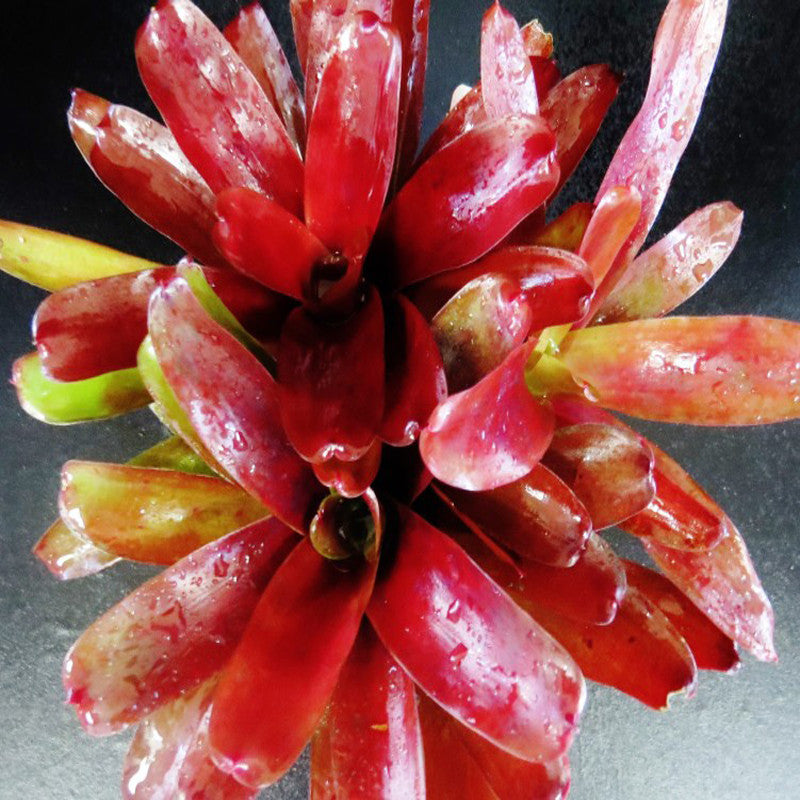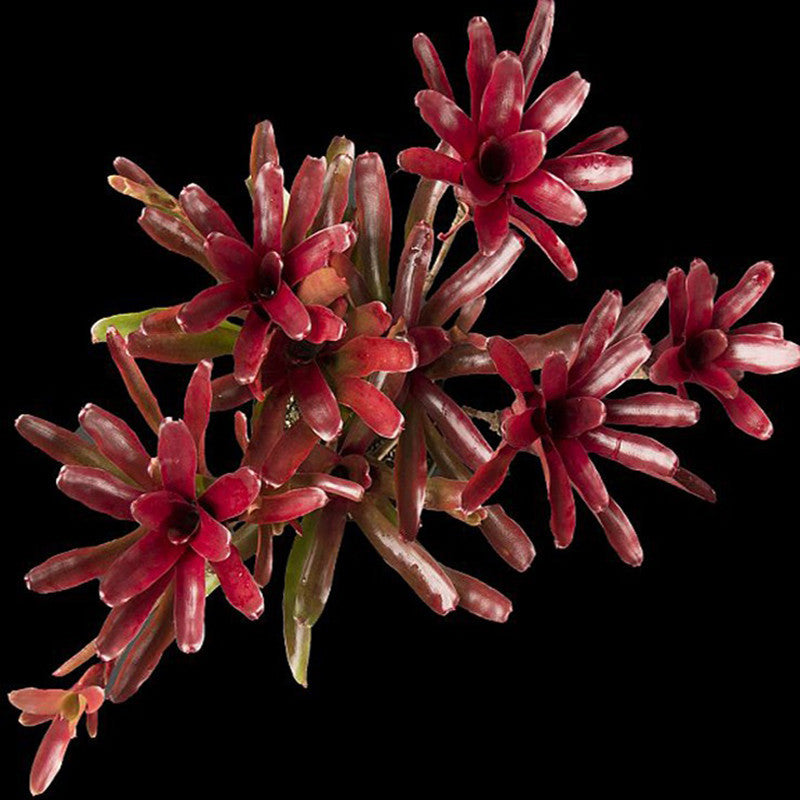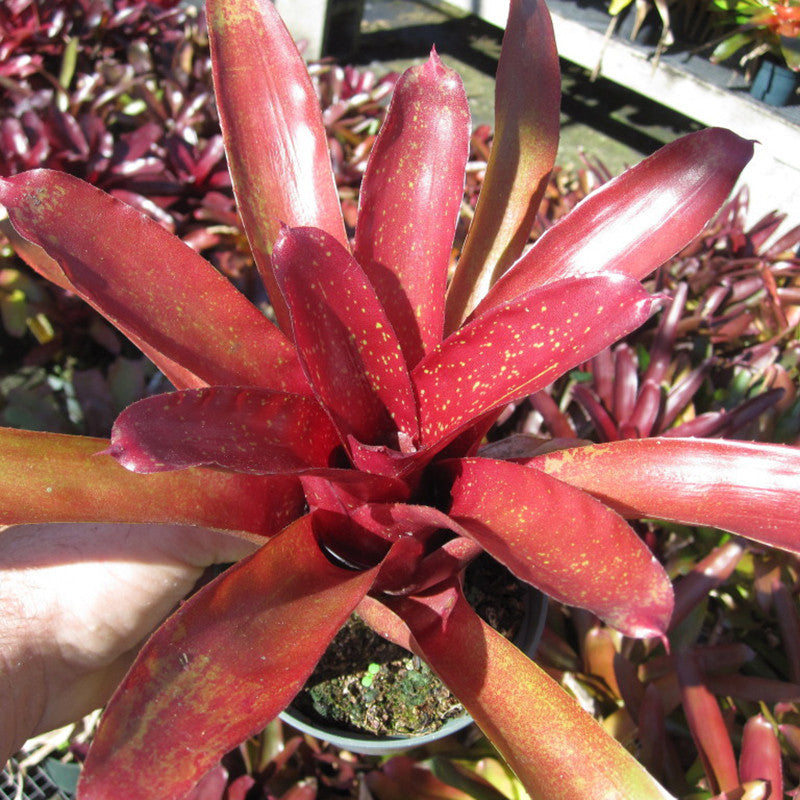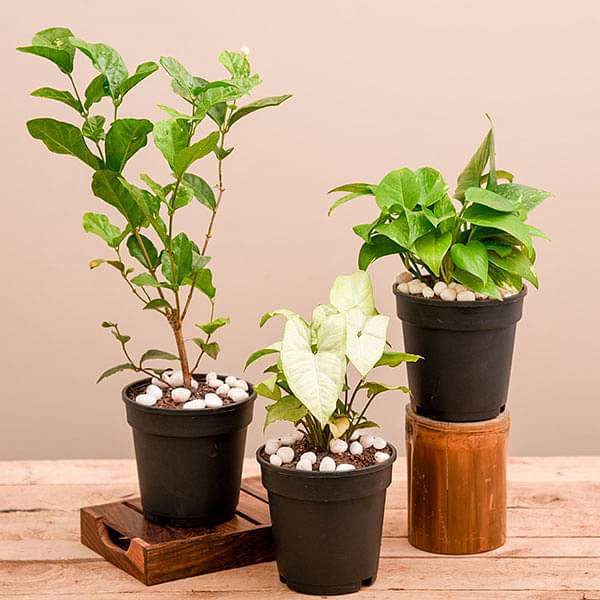The lush, colorful ‘Fireball’ neoregelia (Neoregelia ‘Fireball’) stands out among other bromeliad types with its maroon foliage and compact growth habit. According to the Chicago Botanic Garden, it grows best within USDA hardiness zones 8 to 11 where it will reach a mature height of 6 inches with a 12-inch spread, making it an ideal groundcover or accent plant. This light-loving tropical perennial thrives in warmth and high light, making it one of the best bromeliads for sun. The ‘Fireball’ plant requires little routine care beyond light watering and feeding, although it must receive the right type of water and fertilizer to keep its foliage bright, colorful and healthy.
Watering Neoregelia ‘Fireball’ Plants
Neoregelia plants grow best when their soil is kept slightly dry, but don’t allow the soil to dry out completely or the plant can suffer stress. Provide 1 inch of water each week during the spring and summer months, but water only if the soil feels dry below the surface. During the winter months, water just enough to keep the plant from wilting and don’t water at all if the soil feels moist. When potted, ‘Fireball’ plants should be watered whenever their soil is visibly dry. Run water into the pot until it trickles from the drainage hole at the base.
The type of water used for these salt-sensitive bromeliads is vitally important. According to the University of Wisconsin-Madison, avoid alkaline and salty water, including artificially softened water since it often contains high levels of salt. Rain water and distilled water both work well, although it is best to add a small amount of fertilizer to very pure types of water to prevent nutrients from leaching from the leaves. Somewhat acidic water with a pH between 4.0 and 7.0 works best.
Feeding Neoregelia ‘Fireball’ Plants
Neoregelia ‘Fireball’ plants derive enough nutrients from the leaf litter they drop that they don’t usually require feeding, according to the Auckland Botanic Gardens. However, if the leaf litter is routinely raked up, the plants will benefit from feeding to support their growth. A light application of organic mulch each spring will suppress weeds, conserve soil moisture and also provide a steady supply of nutrients to these light-feeding plants. Stronger fertilizer works better when these plants are grown in lean, gritty soil with a low nutrient content, although too much fertilizer can cause the foliage to lose its vibrant color, according to Clemson Cooperative Extension.
An annual feeding each spring with 1 handful of bonemeal and bloodmeal scattered over each square yard of soil will sustain their growth through the growing season. Alternatively, try feeding with an acidic, water-soluble fertilizer diluted to 1/4 to 1/8 strength. Apply the fertilizer to moist soil and water thoroughly afterward to prevent root burn. Avoid splashing fertilizer on the leaves.
Troubleshooting Neoregelia ‘Fireball’ Plants
Neoregelia ‘Fireball’ plants rarely suffer from serious issues, although they do need some light pruning and extra attention to keep them looking good. Pinching back the small, drab flowers as they appear will redirect the plant’s energy to producing more foliage, which will keep it looking vibrant. Removing the flowers will also encourage the production of more pups, or offshoots, which is vital for the plant’s survival since it dies back every couple of years.
‘Fireball’ plants produce a cup-shaped whorl of foliage at the center of the plant that catches water. Over time, salt builds up in the cup as the water evaporates. The University of Florida IFAS Extension recommends flushing out the cup with distilled water to wash away the salts and stagnant water. If frost is forecast, remove the cup since it is young, tender growth that can suffer damage during cold weather.








Reviews
There are no reviews yet.